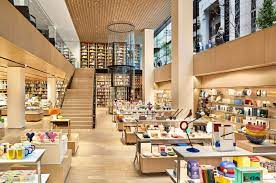
Renovating a retail establishment may be both thrilling and profitable. Your shop’s exterior and interior design are crucial to the brand experience. Remodelling your shop can be expensive, but the positive impact on both customers and staff can be well worth the cost.
Before you begin making any plans, you should consider why you plan to renovate your retail shop.
Why do you plan to renovate?
You wish to refurbish your shop, but do you have a compelling motive? Have you altered your brand? Are your furnishings becoming obsolete? Or are you simply seeking a change of pace? Remodelling may be expensive and disruptive to your business, so be sure you have the proper motivations.
What do you want your shop to look like?
If you’re not an expert, you can consider hiring an interior design firm. Most importantly, having an overall vision for your remodel is essential. Building a mood board with photos that inspire the desired style and layout is beneficial for you and your team and an excellent resource to provide to a designer or architect.
As you design your makeover, you must ensure that the current area can fit any additions. For instance, can your walls accommodate all the new items that need to be hung? Is the wiring in your shop able to accommodate new types of lightbulbs? Addressing these sorts of questions before beginning a refurbishment is vital to its success.
What is your renovation budget?
What and how you refurbish your shop will rely significantly on your budget. Including a 15% buffer in your budget to accommodate any unanticipated expenses that may arise during the process.
What do your clients anticipate from you?
Your remodelling should eventually appeal to the tastes and aspirations of your clients. Consider the consumer experience while evaluating the following aspects of your storefront:
- Entrance: Besides your windows and façade, this is the first opportunity to make a good impression on anyone entering your establishment. Consumers only spend a few seconds evaluating a store’s look when entering. Therefore, it is essential to provide the best first impression possible and keep traffic moving.
- Walls: A new coat of paint can greatly change a place. Also, you may design an accent wall to attract people to a specific section of your store. Consider how your shelving contributes to your overall visual merchandising. Your walls might need more or fewer shelves. Or perhaps you require additional or fewer wall space?
- Lighting: Lighting has a substantial effect on mood. Determine if your existing lighting produces the desired impression and mood on your customers. If not, it may be necessary to upgrade or make modifications.
- Flooring: Broken floors are typically an indication of a disorganised area. Examine your flooring to see if it needs replacement.
You may directly ask your clients to determine which shopping experiences they prefer. Ask your staff for feedback to see if they have any suggestions on attracting clients.








